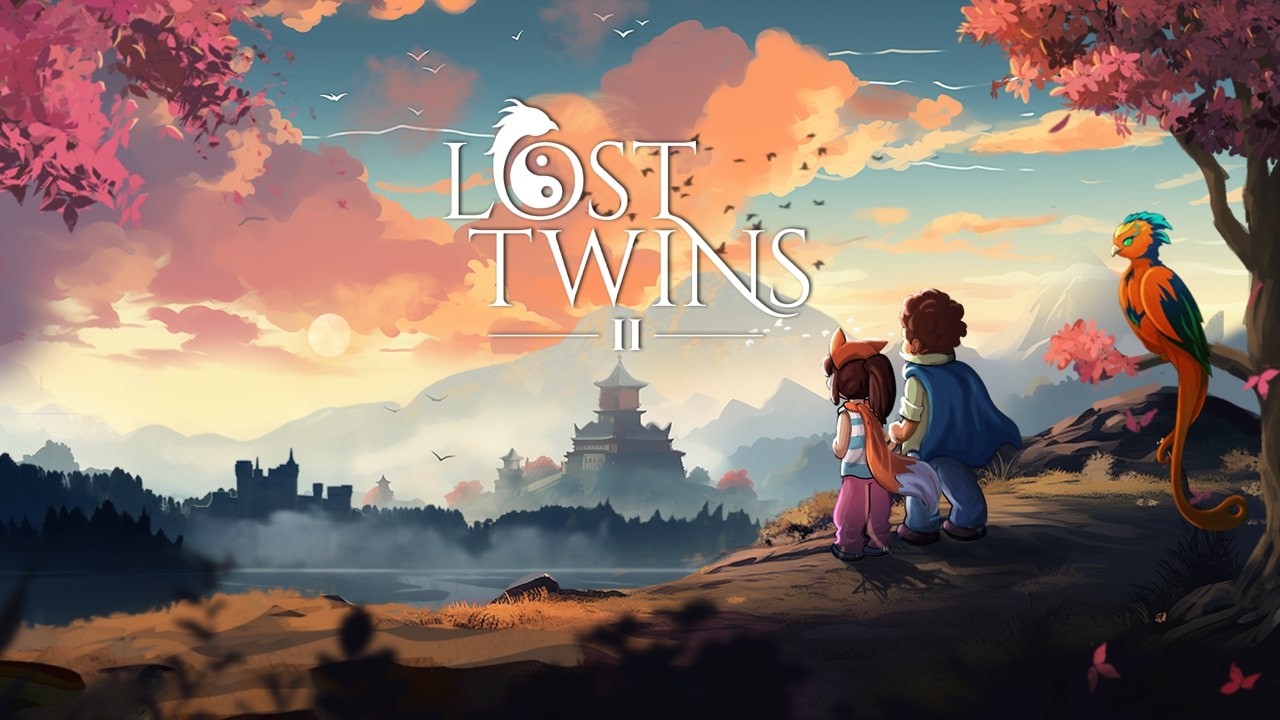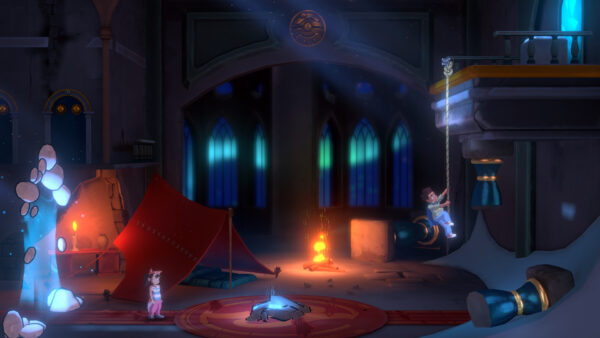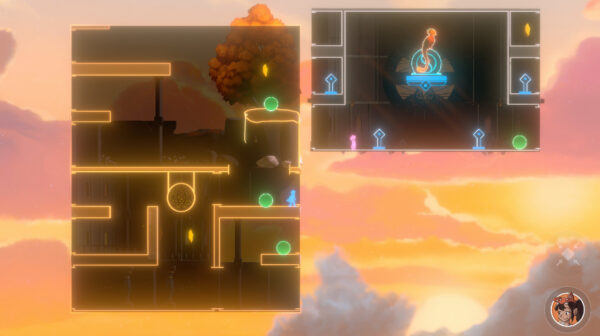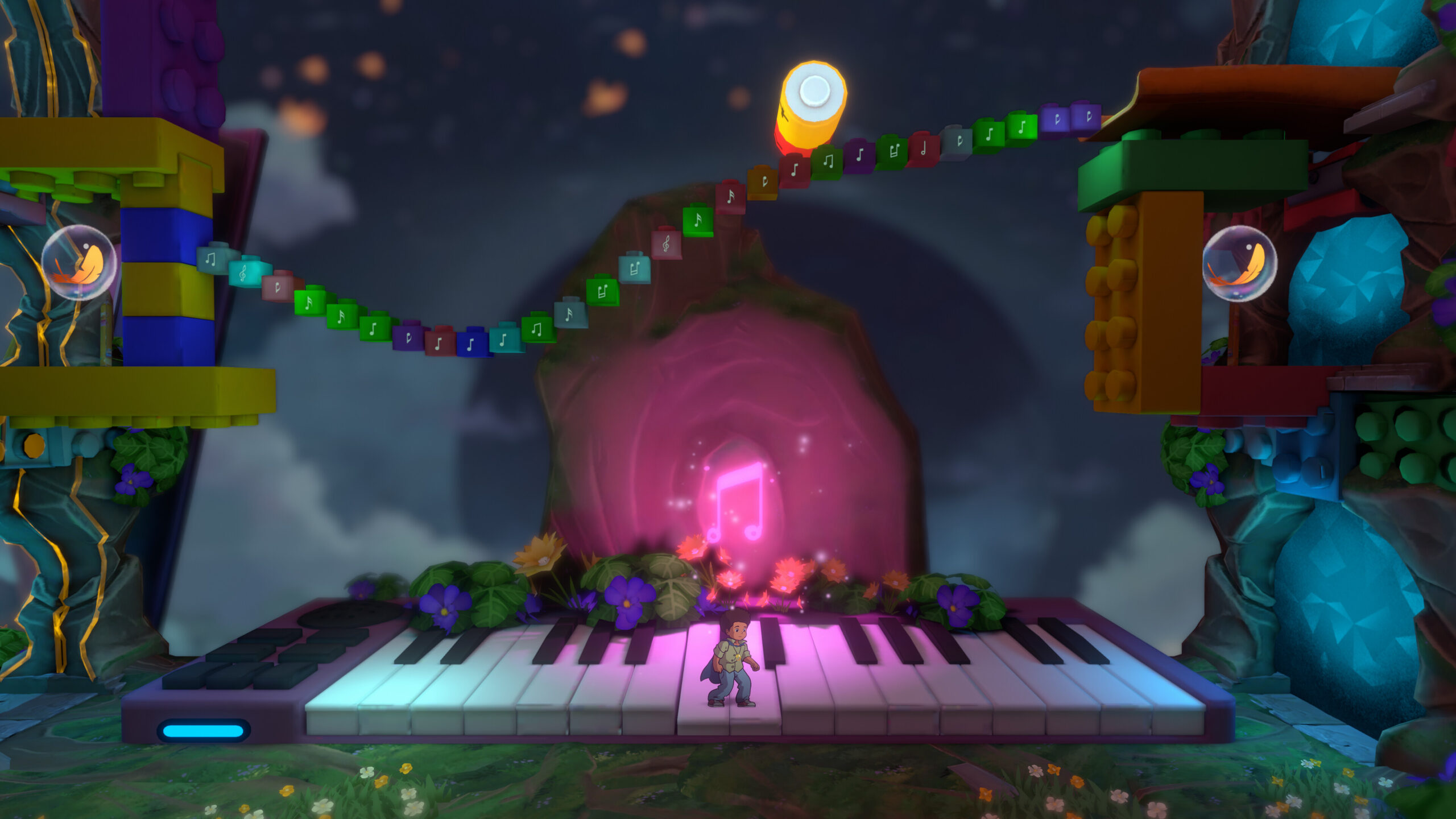With the upcoming release of whimsical puzzle-platformer Lost Twins 2, Pakistan-based studio Playdew chats with us about the state of indie games in Pakistan, what it’s like being recipients of the Draknek New Voices grant, and the challenges of creating an anticipated puzzle adventure follow-up.
Tell us a little bit about yourself and your roles within Playdew.
I’m Muhammad Momin. I’m the senior engineer within Playdew and oversee the mechanics of Lost Twins 2 together with the architecture and art. I’ve been a game developer for the past 6 years and it’s my passion.
I’m Urooj, and I’ve been in the game industry for 5 years. I have been at Playdew for 3 years and handle the marketing and promotion of our games.
I’m Sajjad, I’m in charge of the audio, UI, control mechanisms and preliminary console porting.
On the Lost Twins 2 Steam page, the description says that “the goal is to delight both children and adults”. What’s your approach to achieving that? What challenges have you faced?
The art style is one such facet of appealing to all ages — we included colorful drawings to appeal to kids and to evoke a sense of nostalgia in adults. You can simply kick back and play this game after a long day. The main challenge we faced was to balance difficulty with anti-frustration features to make it accessible for children and adults. For example, there is no dying in the game.
In Lost Twins 2, you can switch between the game world and the sliding tile overlay like in the first game. What was it like to revisit this idea? Did you iterate on some of the concepts from the first game, or did you come at it from scratch?
We kept that mechanic consistent between Lost Twins 1 and Lost Twins 2. The art style was greatly improved for the latter game and new puzzle elements were added.
Players can now switch between multiple rooms and in the overlay view (where you slide world tiles) you can view the various characters and elements to figure out how to finish a level. The most interesting aspect is that the tiles can only be connected if their colored points match. With Lost Twins 1, the scope was a lot smaller.
The first games in the Lost Twins series were made by we.R.play — what’s the connection between them and Playdew? How did the team come together?
we.R.play is the parent company of Playdew and we all used to work there. Wanting to make our own games, we decided to branch out as we.R.play was a third-party-oriented game development service.
We wanted to start on something that we already like (Lost Twins 1) and the CPO of we.R.play loves puzzle games, so he gave us his blessing to start our own company. As for how the name “Playdew” came to be, we wanted something to reflect the connection with we.R.play, hence we decided on the first half — “Play”. As for the second half, we experimented with different names and finally settled on “dew”, in connection with the morning dew one can see when you wake up in Pakistan.
How are you changing things up from Lost Twins 1?
There is a huge upgrade in the overall visuals — the backgrounds are now in 3D and both the SFX as well as the animation work were polished. We weren’t too experienced when we made Lost Twins 1.
Lost Twins 2 is a story of twins lost in the world of the phoenix as their playroom is struck by a storm. The goal of the game is to find and help them to get their life back. It stands on the shoulders of Lost Twins 1. The stories of both games are not connected though — so you can play each game without any issues in continuity.
What was it like receiving the Draknek New Voices grant and how has it helped you all?
When we applied, we weren’t expecting that we would get it. Suddenly there were interviews and we went through the selection process. But we’ve made a pretty good game, so it was nice receiving it. Workplace morale went up and the team was much more motivated. Not to mention that we could add more features and upgrades — a lot of anxiety about getting there was alleviated. We were also able to hire more team members and spend money on marketing the game — Playdew had 7-8 people working full-time at the height of production.
Tell us more about the game dev scene in Pakistan — what’s it like? Is there a strong development community?
The Pakistani game market leans more into the consumer side of things, there are very few developers. The developers that are working in games largely work on mobile (80-90%) and the remaining 10-20% are those that do stuff like VR and games for other mediums.
There are no AAA studios in Pakistan at all, and most of the developers are self-taught via YouTube videos and tutorials. Not many people are doing game development because it’s a niche market there, and they’re not encouraged to learn and experiment with new technology. Sajjad studied web development at university, and most of his classmates have moved on to work in web development.
There are only 4-5 big local studios and most people that get into this industry have a passion for it — and what’s more, there isn’t a dedicated game development course in any of our universities. There are a lot of limitations in the ecosystem for encouraging game development.
Many studios receive support from others in their local industry or even government grants. Have you been able to benefit from anything like that at Playdew?
Not for now. The gaming industry isn’t recognised and last year the government did turn their attention to it because it was starting to make money. We were still lumped in together with animation and graphic design though. Very few are aware of the benefits the game industry could bring to Pakistan.
Last year, they offered limited travel opportunities to GDC, but these were centered around the larger game companies — there was no open call.
As you are nearing release, how’s the team doing? Is there anything you’d love for people to know about the game?
It’s a mixed bag of anxiety and excitement. We won’t really know how to feel till it’s truly done. Till the day of release, we’ll be updating our social media as much as we can. The development team will be pushing our limits and working very hard.
Currently, we are doing QA and are polishing the game as best we can. We want to provide users with a clean, polished product instead of patching it after it comes out. There will be a lot more content and the levels in the demo version may change.
Lost Twins 2 will be released sometime in 2024, and Playdew recently announced that they’ll be bringing the game to Xbox. If you’re keen to play this whimsical puzzler sooner, you can check out the game’s free demo over on Steam.






Leave a comment